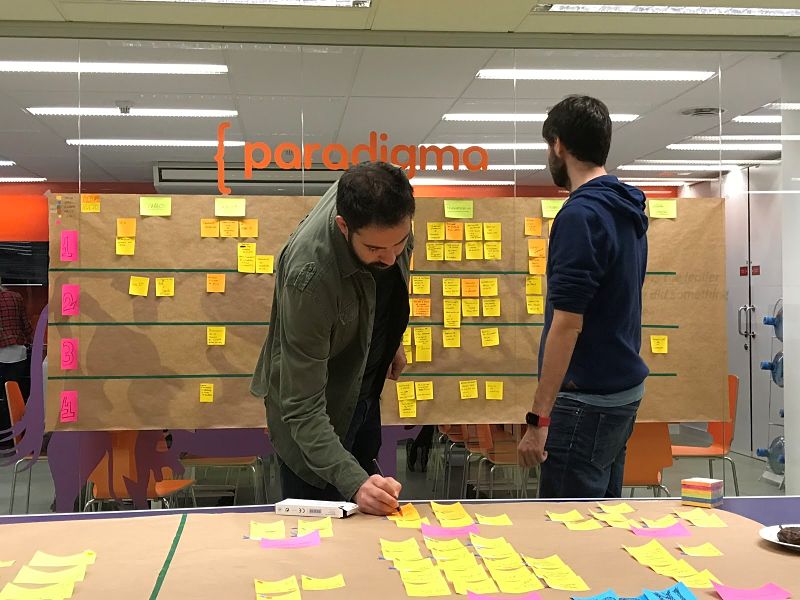To help companies in their digital transformation, in Paradigma we normally use the DTMA framework, which is based on our own development tool and helps us in the process at three levels: measuring the level of digital maturity of a company, designing an execution plan with a practical approach and then monitoring the progress of the transformation process once the execution has started.
However, a company that benefits from the incredible benefits of digital transformation requires certain commitments on its part that are sometimes complicated to obtain, especially in larger, more traditional companies. It requires, on the one hand, mediating and support on the part of the direction of the company. It also requires the involvement of all departments of the company so that the transformation truly sticks in the day to day.
For different reasons, not all companies meet these two essential requirements to start the DTMA.
In these scenarios we use a lighter framework, Digital FastTrack, which allows us to approach the transformation from a more tactical point of view, focused on identifying digital use cases that allow us to take full advantage of the continuous technological advances and new trends applied to a particular vertical and business.
It is a different approach based on obtaining small quick-wins at first that give us facts with which to convince the whole organization.

New technologies like IoT, social networks, mobility, artificial intelligence, blockchain, etc. are a great opportunity for the creation of new channels, new products or services, and even business models that will only come up if you ara aware of your possibilities.
Therefore, the goal of Digital Fasttrack is to look for very specific applications of these disruptions within a company, either to improve existing problems or to give way to new lines of business.
To address this process, the traditional strategic consulting formulas are no longer useful, it is necessary to approach a strategic design process in an agile way, in a few weeks, steering away from heavy deliverables and creating a framework of collaboration with customers passing through three distinct phases:

Immersion
The main objectives to cover when we begin to work in this type of processes is to know, on the one hand, the particularities of the business and, on the other, the intricacies of the company.
We consider that the best way to obtain this information is not working in a classic interview model, which wastes a lot of time and gives biased and unstructured information; but rather through specific dynamics to identify the context and the main business processes based on visual flows.
Working based on dynamics in this phase not only allows us to obtain more information in less time, but also to focus on the business avoiding getting stuck in the usual organizational tangle. In this way, in addition to the former, we get the participation of all the stakeholders involved from the very beginning.
Ideation
Once we know the main business flows of each company, we are able to start applying more creative models to identify how to apply the new digital disruptions on them.
In this phase, we also work based on dynamics, but in this case focused on product design, where the business knowledge of members of the company are combined and, on the part of Paradigma, knowledge about the state of technological art and its application to the business.
The objective of this phase is to generate the greatest possible number of ideas or use cases.
Solution design
Nonetheless we can not be left only with ideas, if we want the process to be useful we need a realistic plan on how to apply them in the company.
In this last part, we take all the use cases generated in the previous phase and we do a small feasibility study, as well as a qualification of the same according to different criteria, with the objective of picking the most proising two or three use cases which we will now go into detail.

Thus, at the end of this process, in about 3 weeks, we will get two or three innovative use cases with which to start the digital transformation in a company. Each of them with a small feasibility study, an implementation roadmap and the identification of the people that need to be involved within the company to execute each case.
This is the way in which in Paradigma we put into practice the transformation of a business from a tactical point of view. A process that we carry out in a few weeks and that serves companies to profit from the benefits of digital transformation, with real use cases with which to obtain gains from the earliest possible stages.
Comments are moderated and will only be visible if they add to the discussion in a constructive way. If you disagree with a point, please, be polite.





Tell us what you think.